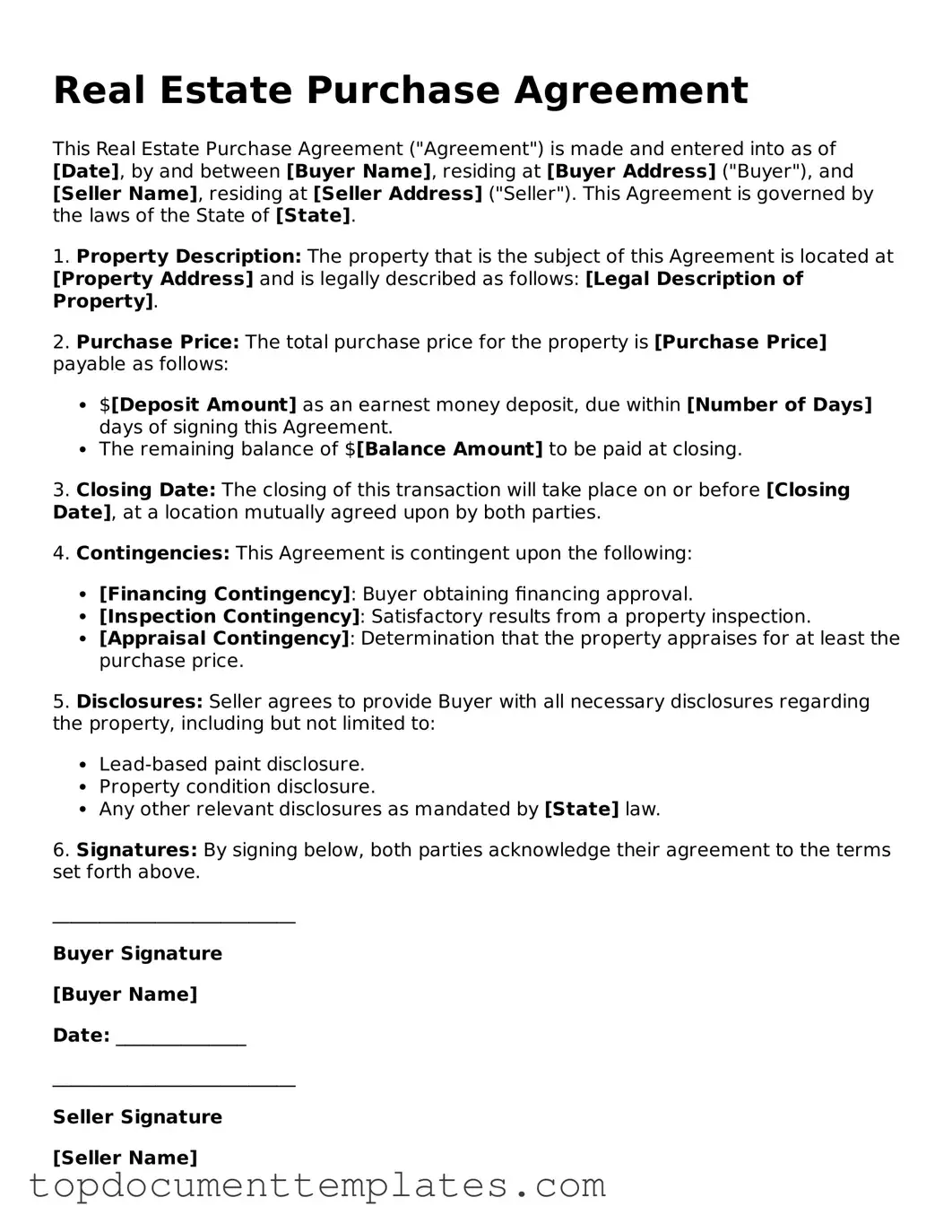When navigating the exciting yet complex world of real estate transactions, understanding the Real Estate Purchase Agreement (REPA) is essential for both buyers and sellers. This crucial document serves as a roadmap for the sale of a property, outlining key elements such as the purchase price, financing details, and the closing date. It also specifies the responsibilities of both parties, ensuring that everyone is on the same page regarding contingencies, inspections, and any included fixtures or appliances. Additionally, the REPA addresses important legal considerations, such as disclosures about the property's condition and any potential liabilities. By clearly delineating these aspects, the Real Estate Purchase Agreement not only protects the interests of both the buyer and seller but also paves the way for a smooth transaction process. Whether you are a first-time homebuyer or a seasoned investor, grasping the nuances of this agreement can significantly influence the outcome of your real estate endeavors.
